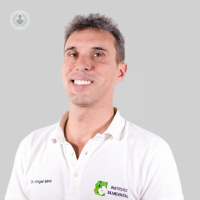How Digital Orthodontics Is Changing
Written by:The arrival of intraoral scanners, Digital Smile Desing , 3D radiographs and different processing software, has given a turn to the planning of orthodontic treatments .
The most well-known technique that uses the digitalization is the invisible orthodontics , especially invisaling that, through its software Clincheck , allows us to plan in a three-dimensional way the movements that we want in each tooth to be in perfect occlusion, function and aesthetics. In addition, the patient can be shown the simulation of what will be his treatment and the final result of it.
With software and three-dimensional reconstruction of the case of each individual patient we are able to know in advance what number of aligners we need and, as they have a time of use, we will know what approximate duration of treatment our patient needs. This time can vary according to certain factors, so it is always informed that it is "approximate".

To begin an invisaling treatment it is necessary to carry out an intraoral digital scan or a scan of some impressions of the teeth made with a special material called silicone, some x-rays and digital photos of our patients. All this material is sent to the centers of invisaling in STL files, the digital information is processed and the three-dimensional images are developed with which we can see and work our patient.
According to the clinical history with our patient, their needs and the clinical decisions of the professional, we will decide what movements we must perform in our patient's teeth. All these movements are controlled in 3D and digitally, and any changes can be made until an ideal and predictable result is obtained.
Once we are satisfied with the clinical result, when we quote our patient and digitally share his clinical solution to participate and see in animation how his mouth was, how his teeth are moving, how his treatment evolves and in which position finalize your teeth, both aesthetically and functionally.
Through the same software Clincheck must and can check the progress of the treatment digitally each time the patient comes to the clinic confirming that the movements are being performed in the right way, and also serves as an excellent tool for the patient to leave comparing and seeing their evolution from month to month with the beginning of treatment.
 There are also other techniques that use this type of technology: Incognito (lingual orthodontics) and Insignia (vestibular orthodontics); are techniques that make custom made braces , and that are designed exclusively for each tooth of each patient. Also made are the arches to be used according to the movement that we desire and the malocclusion diagnosed. All these techniques require a digital scan that generates an STL file that will be processed by the software of each technique or, if not, a digitized print of silicone.
There are also other techniques that use this type of technology: Incognito (lingual orthodontics) and Insignia (vestibular orthodontics); are techniques that make custom made braces , and that are designed exclusively for each tooth of each patient. Also made are the arches to be used according to the movement that we desire and the malocclusion diagnosed. All these techniques require a digital scan that generates an STL file that will be processed by the software of each technique or, if not, a digitized print of silicone.
In addition, through the Digital Smile Design we can also simulate the changes in the teeth that we will treat. This technique, DSD, will give us valuable help for patients (whatever the orthodontic treatment to be performed (conventional brackets , porcelain or any device) can be seen in their own mouth, in front of a mirror, before starting to be treated. This will be further developed in a specific DSD delivery. A key example is when we have defects in the size of the teeth, called Bolton spaces, and can make a small simulation of how the smile will look if we add some composite restorations, veneers, etc.. at the end of treatment or if we do not add anything.
Full-3D 3D radiographs (CT and CBCT, both digital) help us to plan not only dental movements, but also movements of the maxilla and / or jaw, in those patients who, if necessary, receive a combined treatment of orthodontics with maxillofacial surgery.
In order to make use of all these tools that the technology gives us, it is necessary to perform a previous analysis, which should consist of intraoral photos, facial photos, study models and / or intraoral scanner, and something very important that can never be forgotten: diagnosis and clinical history performed by our most qualified dentistry professionals .


